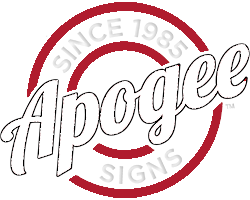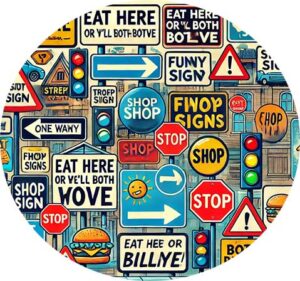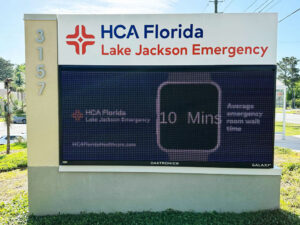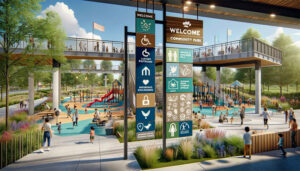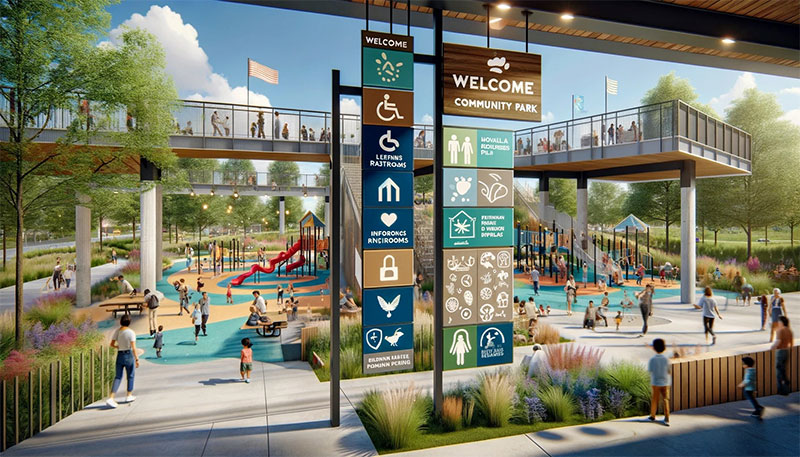 Signage plays an indispensable role in shaping the functionality and aesthetics of community spaces. From public parks to urban areas, well-designed and strategically placed signs are essential for creating welcoming, navigable, and engaging environments. This article explores the multifaceted impact of signage on community spaces and how it enhances the overall experience for residents and visitors alike.
Signage plays an indispensable role in shaping the functionality and aesthetics of community spaces. From public parks to urban areas, well-designed and strategically placed signs are essential for creating welcoming, navigable, and engaging environments. This article explores the multifaceted impact of signage on community spaces and how it enhances the overall experience for residents and visitors alike.
Creating a Welcoming Atmosphere
The first impression of a community space is often influenced by its signage. Attractive and clear signs at the entrances of parks, community centers, and urban areas set a welcoming tone. These signs can include the name of the space, a warm greeting, and essential information such as opening hours and rules. By providing a positive first impression, signage helps to foster a sense of pride and belonging among community members.
Guiding the Way: Navigation and Accessibility
Effective signage is crucial for ensuring a community space is easy to navigate, especially for newcomers. In parks and urban areas, directional signs act as silent guides, pointing visitors towards amenities like playgrounds, restrooms, and public transportation. Clear and accessible signage, for instance with tactile lettering for visually impaired individuals, reduces confusion and empowers everyone to explore freely. This fosters a sense of inclusivity and encourages more frequent use of the space.
Safety First: Promoting Awareness and Responsible Use
Safety is paramount, and signage plays a vital role in keeping everyone safe. Emergency exits, first aid locations, and playground equipment usage rules are all crucial pieces of information effectively conveyed through signage. Similarly, in urban areas, signs highlight pedestrian crossings, bike lanes, and speed limits, preventing accidents and ensuring a safe environment for all. Additionally, informative signs can raise awareness about environmental conservation, local wildlife, and historical significance, enriching the experience through education.
Encouraging Engagement and a Sense of Community
Signage can be a powerful tool for fostering engagement and activity within a community space. Parks can come alive with interpretive signs that spark curiosity about local flora and fauna, encouraging exploration and learning. Community centers can advertise upcoming events, classes, and volunteer opportunities, promoting participation and a sense of belonging. Interactive signs, with features like QR codes or augmented reality, can further enhance engagement by creating a dynamic experience.
Building Pride: Strengthening Community Identity
Signage can be a cornerstone of a strong community identity. By incorporating local symbols, colors, languages, and landmarks into the design, signs reflect the unique character and culture of the area. This fosters a sense of pride and ownership among residents. Signage that celebrates the community’s distinctiveness helps build a stronger, more cohesive identity.
Beyond Functionality: Enhancing Aesthetics
Signage goes beyond just providing information. Well-designed signs can complement the architecture and natural landscape, adding to the visual appeal of the space. Artistic signs, murals, and installations can transform ordinary areas into vibrant destinations. This not only makes the space more enjoyable for residents but can also attract visitors and boost the local economy.
Conclusion: Investing in Vibrant Communities
Signage is an investment in the heart of a community. From creating a welcoming atmosphere to promoting safety, encouraging engagement, and strengthening community identity, the impact of well-designed signage is undeniable. As communities evolve, investing in effective signage will be essential for fostering vibrant, inclusive, and dynamic public spaces that serve and enrich the lives of all.
